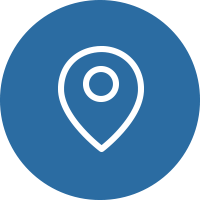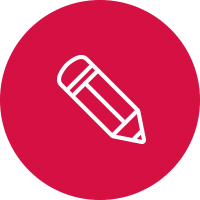Student Research
Research is an incredibly important topic. In an age where information is both easier and harder to access, where information is available in varied formats, and where information is continuing to multiply - it is critical that we aid our young learners as they become information users, information creators, and information managers.
Beyond the discrete skills which allow us to see and treat information as the bricks and mortar of opinions, understandings, and change - our world cries out for minds where inquiry is at home, minds where information is adjudicated, minds where the act of finding-out is actively exercised every day.
How do we help to foster research skills?
How can we help our learners to become student researchers?
What skills will the researchers of tomorrow need?
What are the relationships with information which we need to support?
How can we develop a love of inquiry?
Developing research skills requires instruction, practice, and time. Developing inquiry requires added notions like the addition of deep topics, supported interests, and exposure to varied processes. It's a big job and it's well worth the effort!
On this page, I'll introduce our methods for classroom research projects, our efforts to become successful information managers and creators, and activities and tasks we've used in the past.
Research Projects: Our Note Taking Method
Our large-process for Research involves a two-part process. In our first part, we use traditional resources to gather information. Books from our school library, teacher-selected websites, online resources like our school's subscription to Britannica, and teacher-selected articles.
Our basic rules for note taking include organizing information into chunks, putting information into our own words, collecting what's important, identifying your sources, and not writing in complete sentences.
Research
We divide our note taking into Right-Side Notes and Left-Side Notes. Here is an example of our Right-Side Notes - a page of notes about Thomas Edison.
The sources identified in the upper-right corner are listed on the last page of the notes, on a Resources/Bibliography page. Each resource is numbered and those numbers are indicated in the upper-right corner to identify the resources used on that page.
"...it's not enough to merely gather information, we must respond to it - with curiosity, connections, ideas, and more."

Once students have completed their Right-Side Notes, they move on to Left-Side Notes. The left side is all about responding to the information we've collected, because it's not enough to merely gather information, we must respond to it - with curiosity, connections, ideas, and more. Check this page out for Directions for Left-Side Note Taking.
The process for working on our Left-Side Notes begins with a re-read of the right-side, reading one section at a time. After reading a section, the student moves "across the street" to the left-side. of their notebook.
There, they begin to consider the information they've just read. They try to craft responses which fall into five classifications: Questions, Wonders, Ideas/Theories, Connections, Causes & Effects, and a Main Idea. See the example provided below.
It is from these curiosities, connections, and that interest-driving projects might come. Deep inquiry can begin with informed questions and recognitions of gaps in personal understandings.
Our Right-Side, Left-Side Research begins in third grade with support, modeling and examples, and progresses through fifth grade where independence is expected. My hope is to send students to middle school with not only discrete skills in gathering information, but also the global understandings of inquiry.
Research Topics:
I'm often asked about the topics I use for research projects in my classroom. We use a three-year cycle of universal themes for 3rd - 5th grades. There are a few research topics which we rely on within those themes, but we also leave room for topics which peak our interest as a class. These research projects generally last for 5-6 days: 2-3 days of note taking, 2-3 days of production, and 1 day for presentation and reflection.
Change: Change Makers (people who have created great change in the world), Invasive Species, Cities of the Future
Structure: Buildings & Bridges, Feudal Times, The Disney Project, Extremophiles
Quest: Explorers, Inventors & Inventions
In our Primary grades, we focus on primer-skills of collecting information, recognizing the difference between facts and opinions, etc.
Information Users
In our class, we use a variety of activities to help us build our skills as information users. I've listed just a few of our tools below - more can be found in my Teachers Pay Teachers store - Miss Kelly's Class. Most are free! The tools below focus on digging into information, responding to information, managing research time, etc.
Examples of Information Activities:
This activity page is a tool we use to help us digest a text. We also use it to get to understand various types of information including statistics, facts, and quotes.
The purpose of this assignment is to: 1) Demonstrate your research skills - including selecting topics and subtopics, locating information, and taking Right-Side Notes. 2) Demonstrate your ability to select and gather the most important pieces of information. 3) Demonstrate your ability to use advanced language to share information in a thoughtful, informative, creative, and edited way.
For students who struggle with the independent nature of our research process, this mini-contract helps students to break a big job down into smaller pieces. I meet with the student and set up a mini-goal for a chunk of time, for example: "Right now it's 11:00, but 11:15, how many facts will can you commit to collecting under the "History" subtopic?"
Research Resources:
I have a few favorite resources I like to use for introducing information to my students.
Tween Tribune is my go-to resource for informational text, particularly for current events, real world problems, etc.
Wonderopolis is another great resource for specific topics of interest.
Information Creators
Information using is one thing. Information creation is another… and frankly, it’s way more fun!
Learning how to create and curate a body of novel information requires modeling and practice, but it can be surprisingly easy to do in the classroom.
Here are a few tips:
1. Decide on your method: online, paper, or in-person?
There are several online tools available which you can use to create a set of data on a topic of mutual interest in your classroom. We have used Poll Daddy, Survey Monkey, and Google Forms in the past. I’ve landed on Google Forms as a favorite and go-to online tool – it’s free, easy to make, and easy to use.
I’ve used paper surveys as well – for small surveys and for school-wide surveys. The biggest consideration I can caution you about is time. My class is a resource classroom. It only took one time of doing a school-wide paper survey to realize that the logistics of gathering and organizing hundreds of pieces of paper was a poor use of our instructional time. It was super fun and motivational for sure, but it meant that we focused on organizing papers instead of drawing conclusions from data. That was a poor trade off in my book.
In-person surveys are my second favorite type of survey. Heading to the media center or cafeteria with clipboards and questions in hand is mighty fun! Managing data, accuracy, communication – it’s all there!
2. It’s ok to allow your survey program/app/software to manage data for you.
As I mentioned above, I’d rather we spend our classroom time on drawing conclusions from data rather than managing slips of paper. The first time I used Google Formsit felt like cheating, since the program created pie graphs and percentages for us… that is - it felt like cheating right up until I handed the graphs and statistics to my kids. It didn’t take me long to see the value in spending our time in discussions, debates, statistics managing, drawing conclusions, identifying trends, etc. That said, if I had needed to address mathematics or social science goals in that particular project, we could certainly have created our own charts and graphs and then used the Google-created ones as a way to check our work.
3. Flash Polls & Big Polls:
I invite parents of currently enrolled students to join our “Flash Poll” email list. During classes when we have particularly interesting discussion, we sometimes decide to send out a flash poll to see what others think! A flash poll only lasts a certain amount of time – usually we ask for a response by 1:00 that day. If people can participate, great – if not, no worries, there will be another one soon! We also invited other Gifted classes in our district to join our Flash Poll for the year.
Other than occassional Flash Polls, we also use polls within our projects and classwork.
Here is one of our latest efforts: http://bit.ly/1KlB1BN
As part of our research on Explorers, we decided as a class to send a survey to real explorers, to see how they felt about our thesis statements and our Opinion Continuum prompts, (an awesome activity which I’ll explain on another day). We sent the link to our survey to folks in NASA, NOAA, Woodshole, and National Geographic!
A question I’m often asked is how I find people to participate in our surveys. The simple answer is “dumb luck”. The more complex answer is this – experts in fields of work are often passionate about their life’s labors and they’re often happy to share their zeal, their information, and their opinions. I love the task of gathering email addresses before sending out a survey. Tracking down a great collection of email addresses feels a bit like hand-picking the world's best guest speakers to come to my classroom. (It’s not quite as stalker-ish as that makes it sound.) Aim BIG, I say! For our exploration survey – I thought about who the explorers of our day might be… NASA, NOAA, and National Geographic came up as no-brainers. Are there other explorers?! Of course! In fact, it's great to take note of how far and wide a survey travels after you first send it out. It often seems to get a life of its own as participants forward it to colleagues around the country and around the world.
Once I’ve decided on an organization - a governmental organization, a department at a university, a business, I usually look for email addresses for both leaders of the organization and custodians of the organization – the worker bees who do the daily work!
Receiving responses to our surveys is a THRILL for the kids… and for me!


















